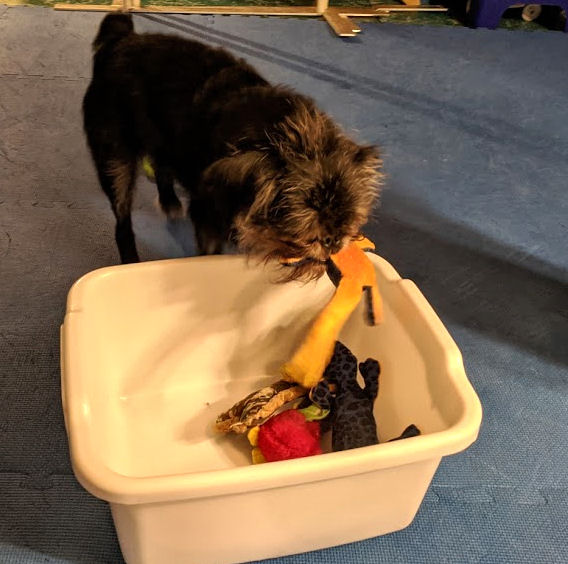“Pack” dynamics was all the rage in dog training a while ago. There are still some remnants of it around. The objective, for those who managed to avoid the nonsense, was that you should be the “Alpha” dog – and that the other dogs would naturally be subservient.

Research into how dogs learn and behave has put paid to this. Dogs in human households are nothing like wolf packs in the wild. Domestic dogs are dependent throughout their lives, and more like perpetual puppies than a mature wolf pack. Pack dog training is unproductive and archaic.
Pack dog training silliness
Recently we’ve seen some dog food commercials emphasizing the relationship between wolves and dogs. While we agree that dogs aren’t designed to be vegetarians, showing majestic leaping wolves morphing into domestic dogs isn’t apples to apples. Dogs and wolves may have common ancestry, but their similarities after thousands of years of domestication are minimal.
If you’ve been following a famous television dog trainer who advocates pack structure and talks about “calming” behaviors, stop it now. It won’t help your training to think you have to dominate your dog. The best and most effective dog training forges a partnership between you. It’s not somber, it’s fun. Rather than forceful and stern, good training is playful and fun.
Go with what works
When we started in dog training, decades ago, there were lots of methods used that we now consider abuse. In obedience competition training, it was common to pinch a dog’s ear to get him/her to pick up a dumbbell. We’re sorry to admit we know of some people who still use it.
It’s not necessary. And it’s certainly not fun, for either the trainer or the dog.

Our dogs pick up all sorts of stuff, carry the stuff around, and put it down where we want them to. And all we did to achieve it was play a game. Here’s how it goes:
“Pick up the thing” game
Get a bunch of treats, your clicker, and the “thing” you want your dog to pick up.
Put the thing on the floor and stand by it. If your dog looks at the thing, click and treat. Do that three times.
By the third time, your dog’s going to figure out that the “thing” gets him/her rewarded. You’ve added value to the “thing.”
When your dog “gets” this idea, ask for more. You don’t have to be quiet, still praise your dog for looking, but now save the treats for something more – touching the “thing” with his/her mouth. If your dog touches it with a paw, you can certainly encourage and praise. The treats should be “saved” for the actions that move the behavior forward – in this case we want the dog to pick up the thing.
That’s basically the sequence: introduce the thing and reward each step in the progression. Each dog’s steps may be different, but could include: look, sniff, lick, pick up. Then run away with the “thing” and show it off like a trophy as you run around!
If your dog does this, the impulse is to run after him and try to get it away. Instead, run with him, or away from him, encouraging your dog to come with you! If you’ve already gotten a box or bin you want the “thing” placed in, run over to that and encourage your dog to “drop” the thing.
No domination here
In just a few short sessions, you and your dog will have a new game to play. And you both had fun learning it. If your ambition includes obedience, it’s even a useful game. And nobody got hurt doing it.






